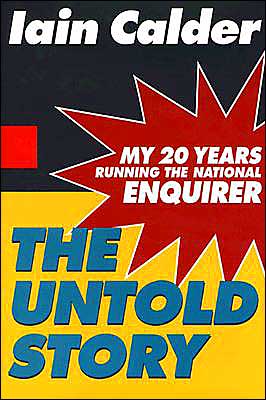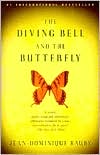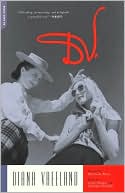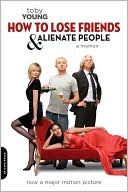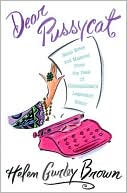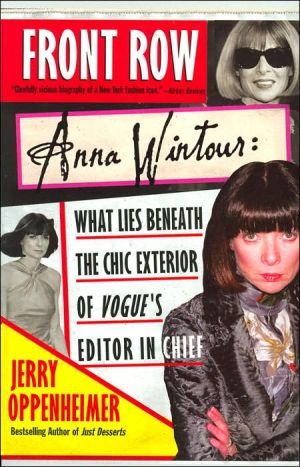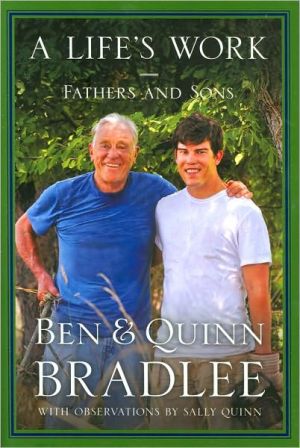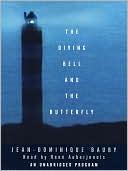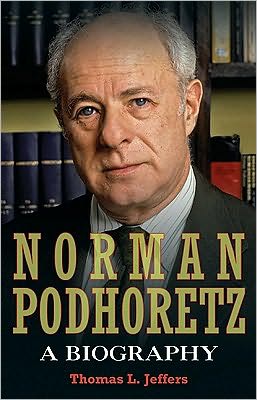The Untold Story: My 20 Years Running the National Enquirer
The flashing bulbs of the paparazzi. The iconic names: Liz, Michael Jackson, Jackie O, Jen and Brad. Americans are obsessed with the famous and the beautifultheir lives, loves, break-ups, and breakdowns. From Entertainment Tonight to People, from primetime to the E! channel, our appetite for celebrity news is seemingly insatiable. But in the beginning only the National Enquirer went boldly where other publications feared to tread.\ In this no-holds-barred account of the most infamous tabloid...
Search in google:
The flashing bulbs of the paparazzi. The iconic names: Liz, Michael Jackson, Jackie O, Jen and Brad. Americans are obsessed with the famous and the beautiful -- their lives, loves, break-ups and break-downs. From Entertainment Tonight to People, from primetime to the E! channel, our appetite for celebrity news is seemingly insatiable. But in the beginning, only the National Enquirer went boldly where other publications feared to tread. In this no-holds-barred account of the most infamous tabloid in America, Iain Calder, its former editor-in-chief, tells all. Over the course of a career that spanned four decades, Calder brought the lurid newspaper to new heights, dramatically raising circulation by combining his streetwise journalist background with the genius of Enquirer publisher Generoso Pope, Jr. Calder was born in a small village in Scotland, left school at sixteen, and rose through the ranks of the Glasgow newspapers. His intense work ethic, ruthless tricks to throw competitors off his scent, and nose for a story served him well, and he was tapped to head the Enquirer's London bureau. At that point, the lowly Enquirer was a collection of gory photos of car crashes and murder victims, but Calder corralled the best freelance journalists in Europe and started honing the formula that would transform the tabloid: a unique mix of celebrity scandal, hard-nosed reporting, and feel-good stories. Pope moved him to the American office of the Enquirer, and the duo transformed the tabloid and, in the process, American journalism. Calder exposes the stories behind the headlines and the wickedly intrepid Enquirer tactics for getting the scoops. With Calder at the helm, the National Enquirer ran the infamous shot of Gary Hart and Donna Rice and the record-breaking photo of Elvis in his coffin. And it was the New York Times that dubbed the Enquirer "the Bible" of the O.J. Simpson trial after reporters infiltrated O.J.'s inner circle. From the contents of Henry Kissinger's trash and the identity of John Belushi's drug dealer to Princess Grace's tragic death, the Enquirer told us what inquiring minds wanted to know as it took celebrity news from the back pages to the front pages and television screens of mainstream publications and programs. Calder re-creates the exhilaration of being at the Enquirer during its most extraordinary period and details the way he and his staff broke the biggest exclusives of the day. At its core, The Untold Story is also a love letter from Calder to the glorious tabloid he helped create. The New York Times - Janet Maslin The Untold Story would not be worth telling if it were just a litany of Enquirer grave-robbing exclusives … but this book earns a legitimate, if small, place in journalism's history as it connects the dots between Enquirer tactics and those of the mainstream press.
THE UNTOLD STORY\ My 20 Years Running THE NATIONAL ENQUIRER \ \ By Iain Calder \ HYPERION\ Copyright © 2004 Iain Calder\ All right reserved.\ ISBN: 0-7868-6941-0 \ \ \ Chapter One\ THE BEGINNING OF THE BEGINNING \ It was 1964, and life was good.\ I was twenty-four years old, with almost nine years of journalism under my belt. I'd covered every kind of story from airline crashes and coal-mine disasters to murders and national elections, and now I was a member of the Glasgow Daily Record's Heavy Mob, the reporters sent out on the front lines of the cutthroat Scottish tabloid wars. I was well paid, with work that was exciting and fulfilling. I was engaged to a special woman, Jane Bell, a hair stylist, who seemed ready to put up with me and the demands of my career.\ Yet I was growing too old to be a young kamikaze. My bosses were only in their thirties, so there were no openings for promotion. I was beginning to feel caged.\ The next logical step was London. Everything exciting-from Mary Quant's eyeshadow and miniskirts to the Rolling Stones' growls and gyrations-came from London, the center of the world.\ With my fiancée's blessing, I asked to be transferred to our parent newspaper, the Daily Mirror, the world's largest English-language daily, with a massive circulation of more than 5 million each day. Nobody in Glasgow had ever asked for a transfer before, but my boss agreed. He even said he'd send me down to London for a couple of weeks that summer, to run the Record's London bureau, right in the Mirror's building.\ But by my twenty-fifth birthday, my transfer still hadn't been formalized and I was feeling frustrated.\ Then destiny stepped in.\ * * *\ During my temporary assignment to the Record's London office, I visited Al Coombes, a short, pocket-Hercules type who tackled life and sports with bulldog-like ferocity. Al and I had met when we both worked at the Record several years earlier, and we became good friends. Shortly after I met Jane, I had a blind date with a young woman named Beth. Lovely as she was, I preferred Jane, which was fortunate, since Al was very interested in Beth. Soon, the four of us were socializing together.\ While at the Record, Al had started freelancing for an unknown American weekly called the National Enquirer. Although the Record paid very well, Al could make two weeks' salary by doing just one story for this strange publication none of us had heard of.\ In 1963, shortly after Al married my former blind date, he announced that he was leaving the Record to open the first London bureau for the Enquirer. By the summer of 1964, Al was well settled in, and on a visit to London, I went over to visit him at his office. Actually, calling it an office is a gross exaggeration. It wasn't much bigger than an average closet. With Al seated at his desk and myself in one guest chair, and Al's secretary (and only employee) sitting in the other, there might have been room for two more people-thin people-to crush in and stand somewhere.\ But Al was happy in his tiny domain. He was responsible for building a stringer network across the whole of Europe, able to pay American rates for stories and photos-a huge premium over British magazine payments. At twenty-five, he was lord of his domain.\ One strange thing: Al strenuously resisted showing me a copy of the Enquirer. I realized later he was too ashamed of his publication, and when I finally got my hands on a copy, I could see why.\ The Enquirer was in its gory heyday-full of the most graphic black-and-white photos of gruesome murder victims, mangled bodies at crash scenes, charred corpses at house fires. Though I've tried to forget it, I still remember one photo of a horse that had been decapitated in some kind of road accident-its body on one side of the road, its head on the other.\ While we sat in his office and talked, Al started to open his mail. Reading one letter, his jaw dropped, his face went white, and he gasped, "I don't believe it." This letter would change my life dramatically.\ Al's boss, the Enquirer's executive editor, had written congratulating him on the excellent job he'd done in the last six months. In fact, his work had been so outstanding that the Enquirer wanted to bring Al to the United States and promote him to assistant executive editor.\ The only delay, the letter said, would be Al's finding a replacement. As soon as he hired someone who could handle the bureau with the same efficiency, Al would have a ticket to the United States.\ Al showed me the letter and said: "Do you want my job?"\ I said, "How much?"\ "Forty pounds"-about $100 a week.\ "Not enough."\ "Forty-five."\ I said, "It's a deal."\ When people claim they alone are responsible for their success, I just don't believe them. What if I hadn't happened to be in Al's office when he got that letter? London swarmed with hundreds of fine journalists, and Al might have offered any one of them the job. I happened to be in the right place at the right time. Luck ... destiny ... whatever the word, it was not something I controlled.\ At that point, I had no idea what I was getting myself into. The world of the National Enquirer was different from anything I had ever experienced, or even imagined.\ * * *\ When you tell people in the United States you left school at sixteen, they figure you're some kind of dropout who missed out on a good education. In my case, I feel the opposite is true. I was born in Slamannan, a small village in a coal-mining region in Scotland-on almost the same latitude as Anchorage, Alaska-but I went to Falkirk High School, in the nearest large town. At Falkirk, we took Latin, French, chemistry, geometry, algebra, geography, history, and other basics-all in my first year, at age eleven. By age fourteen we were reading Chaucer in the original (nearly incomprehensible) Middle English, while at sixteen we were starting calculus. I've never felt I lacked an education.\ Falkirk was a good school, but I wasn't an outstanding student, so in June 1955, at age sixteen, I graduated with my Higher Leaving Certificate and left school forever. Now I was in the real world, looking for a job. Although many of my grade-school pals had found high-paying jobs in the coal mines, that clearly wasn't for me. I hoped for a career with a future, and anyway, how could a 6'2" teenager, weighing a Twiggy-like 133 pounds, work in a 5-foot-high coal tunnel?\ Within a few weeks, I had two job offers: bank clerk at a major Scottish bank, or junior reporter for a weekly newspaper with a tiny circulation. The bank paid 3 pounds, 7 shillings ($10) per week, and the paper offered 2 pounds, 15 shillings ($8).\ Most journalists will tell you they chose their profession because of a noble calling to root out evil, protect the weak, and embark on other equally idealistic crusades. My reason was a little more mundane.\ My sixteen-year-old male glands were demanding attention. I was going to dances regularly to meet girls, and sometimes I'd even ask them for dates. I figured that if I told a girl I was a bank clerk, my chances of impressing her were low. But if I told her I was a newspaper reporter, well, then ...\ That was it. I accepted the reporter job. The fantasy of becoming a major babe magnet remained just that-a fantasy. But within a week I knew I'd chosen correctly. I loved the job.\ The Falkirk Sentinel had a circulation of 1,500 copies per week in an area of about 60,000 people; that made us the lowly, distant number-three paper. Our staff consisted of an editor, a chief reporter, and me. They wouldn't exactly make the title official, but I knew on day one that I was the Sentinel's deputy chief reporter.\ My first morning on the job, George Hawley, the editor, threw me some plot synopses of films to be shown at Falkirk's movie houses in two weeks' time. We had to review upcoming movies so our readers would know which cinema to choose, but since we couldn't see the films in advance, we had to write our reviews based on descriptions sent to us by the studios themselves.\ I wrote them up, pecking out the words laboriously on an old typewriter, and handed them to my editor. He penciled in a few changes and threw the pages into a wire basket on his desk. I timidly asked: "When will my first story actually be published?" His brusque answer: "That was your first story, son. We don't have time to baby people here."\ I was exultant. Wow-I'm a movie reviewer, and they're actually paying me for this!\ Day two was even better. I was given my first interview assignment. A local girl, an eighteen-year-old beauty named Nina Moscardini, had won a dancing competition, and since I was now a fully fledged reporter with twenty-four hours experience behind me, I was sent out to get the story. Nina had been a year ahead of me at school, and every boy-and perhaps every male teacher-had lusted after her. At school I would have been happy to stand 10 feet away and worship her; I knew she'd ignore me, an invisible, lowly younger student.\ But when I interviewed her as a reporter, she talked to me as though I was a real person. She actually answered my questions and perhaps even worried about what I would write. This was the life!\ In the next few months, I traveled around our circulation area by foot and by bus, covering courts, council meetings, flower shows, and soccer matches. You name it, I covered it.\ Everyone in my family was impressed with my job except my grandfather, who was partially deaf.\ When I told him what I was now doing, a broad grin creased his face. "That's great, son. You'll be able to carry bags for all these nice people," he said.\ I was baffled. Then I realized he thought I was a "porter" for the railroad.\ When I explained that I was a re-porter, a journalist, his smile faded. Clearly the job was suspect, not a good, reliable job like carrying bags at a railroad station.\ I, however, was ecstatic. I just couldn't believe anyone would pay me to do this fun stuff.\ * * *\ My best story came about three months into the job. It proved to me, and my boss, that I had a real flair for the business.\ Looking back from the twenty-first century, it is easy to forget the hardship and unrest behind the Cold War Iron Curtain. In the mid-fifties, groups of miners in Poland, Hungary, Lithuania, and other communist countries began striking and picketing against their Soviet masters, even forming underground resistance movements. After a full-scale rebellion in 1956 in Hungary, the protests ended when Russian tanks killed a number of protesters. Many of the men were jailed, brutalized, and even murdered.\ Some of these miners escaped to Britain-and several dozen ended up in a hostel camp in Falkirk. They worked in local mines by day, then returned to their camp and spent the rest of their time with their comrades and a few interpreters. Now the camp was being closed, and the refugees were being split up to live in individual lodgings with local families. All three local papers sent reporters to interview the miners, and I was the baby of the group.\ We separately interviewed dozens of men, through interpreters. These miners hadn't learned much English, but despite the language barrier, I began to sense their unease, even fear. I asked the interpreter why they were afraid. He said, "They fear splitting up from their friends. They don't read or speak English. Without interpreters, how will they find how to get a bus to work? How will they be able to buy food? How will they survive?"\ It suddenly hit me. Here were these heroes who had battled bullets, bayonets, and tanks to fight communism. Men who had never feared anything were now afraid of leaving their safe little camp.\ That's how I wrote my story. The other two rival papers just said the hostel was closing and the miners would move to individual lodgings. Period.\ My editor loved my story. Looking back, I could have written it with more pizzazz, but it ran in the Sentinel without a change. Mr. Hawley also rewrote the story and sent it to the national newspaper, the Daily Record, which published it and sent Hawley a check. He split it with me, and I had my first freelance payment-about $1.50. I was now sixteen, a nationally published reporter, and unofficial King of the World.\ My reign came to an end six months after it began, on February 17, 1956. My paper folded, went bust, vanished, and generally stopped publishing. I was still sixteen, still a nationally published reporter, but now also unemployed and "on the dole," receiving unemployment payments from the government.\ Fortunately, I soon got an offer from the Stirling Journal, a paper headquartered about 15 miles away. I left home at 8:15 each morning and, with late meetings to cover, usually arrived home on the last bus to Slamannan at 11 P.M. On Saturdays I covered soccer games, which meant a six- or seven-hour day. It was about then I realized that to be a good newsman, work had to come before everything else. For the next forty years, I would work fifty, sixty, or seventy hours, six or seven days a week. And I never regretted it.\ Six months later my reputation and my work in Stirling earned an offer to return to Falkirk on the Falkirk Mail. So at age eighteen, I was earning the huge sum of 4 pounds, 10 shillings ($13) per week. In addition, the Mail editor had a freelance contract with many national newspapers in Scotland and England. He would get his reporters to cover news and sports and pay them 50 percent of the freelance fees. He got 50 percent for doing nothing. Even so, it sounded like a great deal to me. The freelance earnings would double my salary-I was rich!\ I was having the time of my life. I was theater critic, movie critic, court reporter, sports reporter, city council watcher, and the main go-to reporter on all the big stories. I saw movies, theater, and sports events for free-always bypassing any lines, something that really impressed the girls. (I must have been prescient at sixteen; being a journalist did have a certain cachet for young women.) I was also attracting attention from the national editors as a promising young journalist.\ My boss, the owner of the Falkirk Mail, was the oldest publisher in Scotland. He claimed to be eighty-three, but he looked at least a hundred years old. He had two bits of advice for me, both of which helped me greatly throughout my career.\ The first was: "To be a success in journalism your health must come first, then your job, then your family, then everything else." It was harsh advice and not necessarily conducive to happiness. But it turned out to be absolutely accurate.\ The second was simpler: "Listen.\ \ (Continues...)\ \ \ \ Excerpted from THE UNTOLD STORY by Iain Calder Copyright © 2004 by Iain Calder. Excerpted by permission.\ All rights reserved. No part of this excerpt may be reproduced or reprinted without permission in writing from the publisher.\ Excerpts are provided by Dial-A-Book Inc. solely for the personal use of visitors to this web site. \ \
ForewordxiThe Beginning of the Beginning1It All Started with Madonna27A New Start39Breaking into the Supermarkets54Sunny Days Ahead62The 1970s--To the Top76The Mysterious Mr. Pope99Building the Team108The Burnett Case166The 1980s--Stronger than Ever171Death of a Genius213The 1990s--The Show Must Go On221It All Catches Up with Me291Afterword313
\ Janet MaslinThe Untold Story would not be worth telling if it were just a litany of Enquirer grave-robbing exclusives … but this book earns a legitimate, if small, place in journalism's history as it connects the dots between Enquirer tactics and those of the mainstream press. \ — The New York Times\ \ \ \ \ The New YorkerIn this memoir of twenty years of editing the National Enquirer, Calder insists loudly on the tabloid’s cultural significance, but his book is strangely parochial: a hagiography of the magazine’s late owner, Generoso Pope, Jr., cut with blustery war stories about the tactics of its dirt-gathering corps—cummerbund cameras, clueless-tourist disguises. Calder makes good points about the Enquirer’s revolutionizing effect on the news industry and the uneasy complicity it forged between celebrities and journalists. Nonetheless, his reminiscences tend to showcase his starstruck side. He devotes more pages to the time he was asked to appear in a vacuum-cleaner advertisement than to the 2001 anthrax attack on the magazine’s headquarters, and he is so proud of meeting Glen Campbell at a supermarket-convention gala in Las Vegas that he named his first child Glen.\ \ \ Publishers WeeklyOn September 3, 2001, Newsweek stated, "you could make the case that The Enquirer almost single-handedly created our celebrity culture." Calder, executive editor of the topselling tabloid for 23 years, substantiates this claim with dozens of entertaining anecdotes about Elvis, Judy Garland, Jacqueline Kennedy Onassis, Roseanne Barr, Donald Trump, Oprah, O.J. Simpson and Carol Burnett (the only star to win a lawsuit against the publication during Calder's tenure). The refreshing surprise here is that Calder's own tale of his rise and reign proves just as compelling as his superstar portrayals. Born in a coal-mining Scottish town, Calder became a "young kamikaze" journalist at 16. He worked under Gene Pope, a visionary who never took no for an answer, called presidents without hesitation and demanded total courage from his staff. Unlike many Enquirer employees, Calder flourished under Pope's pressure, developing a network of contacts, and infiltrated the unions and business affairs offices of major networks, studios and agents. He takes great pride in his paper's research, fact checking and overall accuracy. The book is a compulsive page-turner, like the tabloid it describes, written in clear, conversational style. It offers valuable psychological tools and blunt reality about coming up through the trenches and discovering the secrets they don't teach you in journalism school. (July) Copyright 2004 Reed Business Information.\ \ \ \ \ Library JournalCalder, the former editor in chief of the National Enquirer, that newspaper everyone loves to hate, provides a behind-the-scenes look at the colorful characters who helped turn the tabloid into a pop cultural icon. Spanning three decades, the book traces Calder's journalistic roots in Scotland, his days at the Enquirer's London bureau, his rise as ace reporter and editor at its headquarters in New Jersey, and his promotion to editor in chief after the company relocated to Florida. In snappy prose, he describes how the Enquirer became a moneymaking giant under his mentor, founder and publisher Generoso Pope Jr., and shows how the paper's approach to marketing, sales, and content (e.g., the focus on celebrities' personal lives) was groundbreaking. Throughout, Calder acknowledges with humor the onerous reputation of his paper yet shows how it takes painstaking care with medical topics and other subjects that could affect millions of lives. Overall, this tell-all makes for a fun read for loyal Enquirer readers or anyone interested in popular culture. And with its insights into creative marketing and publishing practices, it is essential reading for budding journalists as well. Suitable for all libraries.-Donna Marie Smith, Palm Beach Cty. Lib. Syst., FL Copyright 2004 Reed Business Information.\ \ \ \ \ Kirkus ReviewsThe notorious tabloid's former editor explains in this zippy memoir how it changed the face of journalism. The National Enquirer's origins lie in the murk of the New York Evening Enquirer, a floundering paper bought by Generoso Pope Jr. in 1952. Pope was a man with shady links to organized crime, but if that was where he found his financial backing, the influence pretty much ended with the printing of Italian league soccer scores. Otherwise, Pope went his own way. He tried a mix of gossip, sports, and a smattering of hard news; moved to a gore-and-crime format; and then had the genius of placing his paper at supermarket checkouts, which meant he had to change the editorial angle-bullet holes would go only so far with homemakers. So Pope shifted to TV celebrities and tragedy, with grace notes of "possible life in space, extrasensory perception, life beyond the grave, and reincarnation." He added useful tips on handling phony salesmen, psychological advice on dealing with a rocky marriage. Brilliantly, Pope addressed medical concerns; he looked for stories that "triggered emotions in his readers." That sounds, the author notes, like today's standard newspaper fare. Writing as if he were in a sprint, albeit one with which it's fun to briskly stride along, Calder recaps practically every story the Enquirer made: Jackie O, Oprah, Elvis, Princess Grace, Michael Jordan, Roseanne Barr, and, triumphantly, O.J. Simpson. It wasn't just for the titillation of it all, he insists, but for the newsgathering; he points to the "truth squad" created to vet stories after the Carol Burnett debacle and the birth of ethics coverage of public officials as proof that the Enquirer is more than a rag. That'ssomething of a gloss-the paper is ultimately a sensational tabloid-but not exactly dissembling. If the National Enquirer is where reporters go to die, it must be America's most exciting retirement community.\ \
